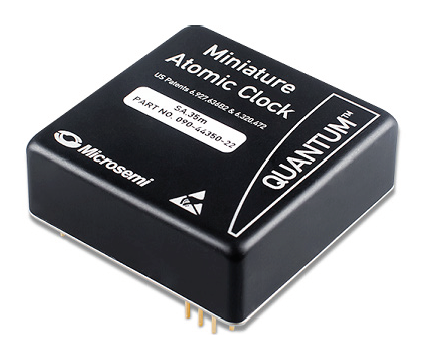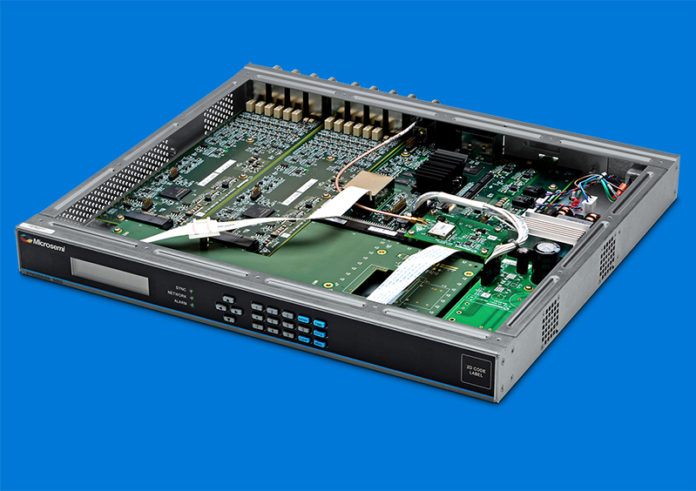Today we are breaking new ground at STH. This is the first time we are going to cover a network time server, the Microchip SyncServer S600. We are going to talk about how it helped keep time at Supercomputing 2019, and to do that, we are breaking ground once again. To help with the story, we are going to embed our first music video in over 10 years that STH has been around. Excitement abounds here at STH.
Do You Have the Time?
Keeping time in modern IT infrastructure is important. If modern IT gear is a half-second off, tracing cascading failures through log devices across different systems can be nearly impossible. This brings us to the question: “do you have the time?” and perhaps the most famous use of that lyric as the opener to Green Day’s Basket Case (1994.) The rest of the song’s lyrics are not applicable, here, but if you listen to the first 18 seconds of the official music video, you are not going to forget this article today.
Today we are talking about time, and specifically, the Microchip SyncServer S600 that had a unique role at Supercomputing 2019 this year. The SyncServer S600 kept time for the show providing sub-millisecond accuracy to the show’s infrastructure.
I had a chance to speak with the Microchip team before SC19. We normally do not cover time servers, but this discussion I found fascinating and learned quite a bit about.
Microchip SyncServer S600
Getting time that is somewhat accurate these days is fairly easy. If a server or a PC has a connection to the Internet, it can get time over that connection that would be considered incredibly accurate just a hundred years ago. Now, we have more machines that operate at higher frequencies and with bigger impacts than a hundred years ago, so those machines need more accurate time resolution. Enter the Microchip SyncServer S600 that is designed to provide accurate, reliable, and secure time to a network.

The basic operation of the Microchip SyncServer S600 allows one to run an antenna outside of a facility to pick up GPS satellite time. The GPS satellites have atomic clocks onboard and provide accurate time. Through a license upgrade, one can access multi-GNSS constellations including Galileo, GLONASS, BeiDou, QZSS and SBAS constellations. At SC19, Microchip had an antenna run that allowed time to stay within 15 nanoseconds of UTC.
What happens if satellite time is lost? That can be a big deal in highly regulated industries such as stock exchanges where there can be a requirement for keeping within 100ns of UTC. For that, the SyncServer S600 can use a local backup clock source. Since local clock sources can have different levels of accuracy, the company has options here.

Here the standard oscillator is something more akin to what you may have in a watch. OCXO is an oven-controlled crystal oscillator. Crystal oscillators can vary in accuracy based on temperatures. The OCXO option helps mitigate that temperature variation. For those that need more accuracy, the company has a miniature atomic clock that uses Rubidium and is small enough to fit in a pocket.

Beyond the hardware features for timekeeping, the SyncServer S600 has features such as NTP Reflector and security hardening.
We were told that the pricing on the SyncServer S600 usually ranges from several thousand dollars to about $20,000 with all features enabled. If you do need this level of security and accuracy, then that is a relatively reasonable way to get it. If you are interested in a solution like this, Microchip (via their Microsemi acquisition) has more documentation available.





I mean, you could do that. You could also go all-out with your own cesium. 🙂
https://www.microsemi.com/product-directory/cesium-frequency-references/4115-5071a-cesium-primary-frequency-standard
And heck, why not clean up that clock so it’s even better? 🙂
https://www.microsemi.com/existing-parts/parts/138085
(Yes, I know there’s no point, but I miss that lab…)
Wow, this I did not even knew existed.
I guess one needs to configure their servers to query the time server every few minutes, right?
Marcelo B reading the docs you just use NTP. Time is delivered via the network.
Very cool! And if NTP isn’t precise enough, there’s always PTP (IEEE 1588v2) for that sub-100ns synchronization mentioned in the article (hence why stock exchanges use PTP rather than the more common NTP). 😀
As someone who is crazy enough to run a GPS-synced time server at home (albeit an older and much less costly model than the one featured here), I’d advise any beginning intrepid horologists to check firmware availability for clocks before making a purchase, because some vendors put firmware behind an impenetrable paywall. Also, check end of life notices for issues relating to things like the GPS week rollover, as some out of support devices have no updates available to keep them from being rendered inoperable after a specific date.
Finally, for what it’s worth, while it’s been fulfilling to tinker with, buying a GPS netclock has done nothing to make me less terrible at getting to meetings on time. Caveat emptor, YMMV, etc.
Atomic clock small enough to fit in a pocket? Hmmmmmm… Christmas is coming up… Choices, choices…
20000 $ seriously ? I get all i need from this simple small 350$ device. http://www.leobodnar.com/shop/index.php?main_page=product_info&products_id=272